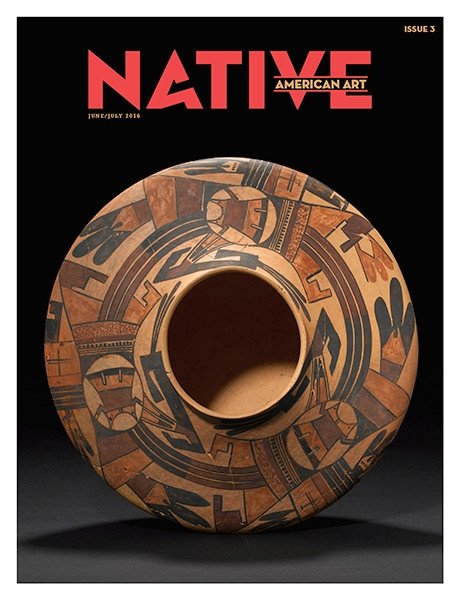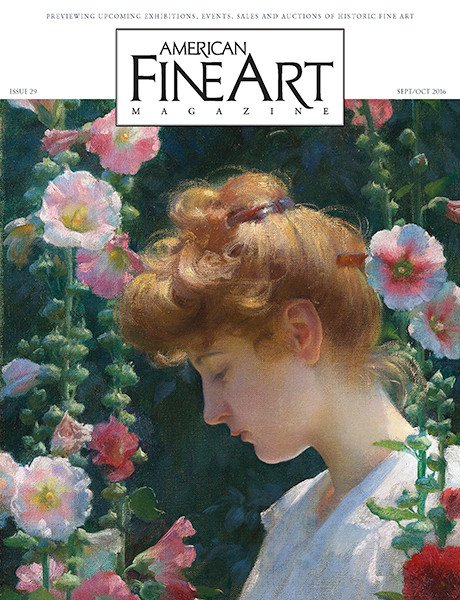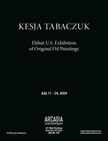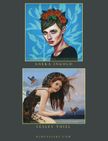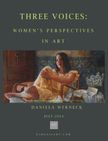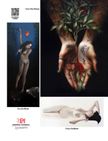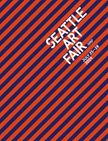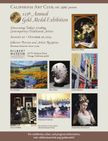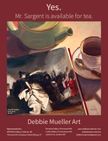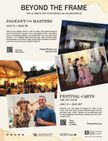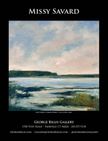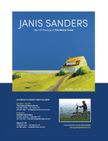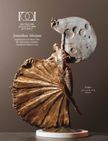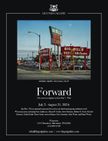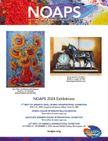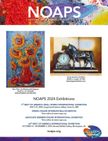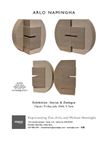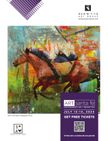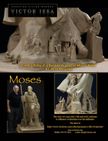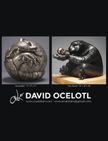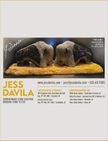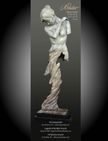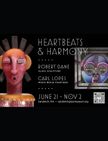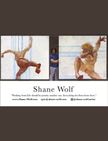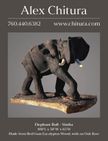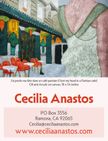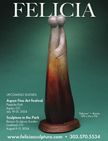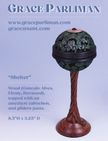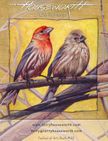The Palmer Museum of Art at Penn State University reopened June 1, in new buildings that doubled the size of the existing exhibit space. Along with collections including African and Asian art, studio ceramics and glass, in its American holdings the museum boasts some intriguing paintings. Thomas Hart Benton’s Shallow Creek is an uncanny landscape of the strangeness and alienation of a riverside, and Georgia O’Keeffe’s Lake George enters a blue landscape, finding the sweep of wind and wave blown over wide water. Richard Diebenkorn’s Man and Woman, Seated, divides the space around a conferring couple in bright color and gray, hanging somewhere between conspiratorial figuration, and the composition and experiment of modernism. But, while these paintings are interesting, doubtlessly the most immediate, intriguing and intellectually challenging star of the collection is Simon Dinnerstein’s The Fulbright Triptych, which haunts the visual lexicon of 20th century American representational art. Fifty years have slipped into the past since Dinnerstein completed the painting in 1974—enough time for two generations to be born.

The Fulbright Triptych, 1971-74, oil on wood panels with gold leaf, 79½ x 156”. Purchased with funds provided by the Friends of the Palmer Museum of Art, 82.14. ©Simon Dinnerstein.
It is an impressive composition of three tall panels over 6 feet high. A man and a woman are seated on either side of the centerpiece, facing directly toward the viewer. Two windows open to a landscape of houses on the edge of rural environs, with distant mountains bluing on the horizon. The walls are covered with paintings of pictures clipped from art magazines, postcards, letters and children’s drawings. The square central panel contains an unusual still life of a green baize table spread with the tools of an engraver—burins and scrapers, calipers and crayons. The object of their use rests on a leather pillow, a copper disc scored with the shapes of leaves and bricks—an engraving of a suspended view of an abundant tree grown within a walled and fertile suburban Eden. It is a picture of Angela's Garden, an engraving Dinnerstein completed during the first months of a Fulbright scholarship in 1970. The triptych came into being after Dinnerstein applied for the Fulbright, planning a trip to Spain to study with Antonio Lopez Garcia. The journey could not be scheduled, and instead, grant administrators sent him to Hessisch Lichtenau, in central Germany, to study printmaking and drawing, particularly the work of Albrecht Dürer. Halfway through the residency, Dinnerstein stepped back from his work and was compelled to paint what he saw.

Angela’s Garden, 1970, burin engraving, 11¾”
Although the view from the windows showed a pleasant burgh of bourgeois German houses, Dinnerstein had arrived in a frightening place. Those provincial homes were filled with people who, only 25 years earlier, would not have objected if he, his wife and his as-yet-unborn baby girl had been dragged by jack-booted Nazis to be slaughtered in a death camp. As he composed the triptych, Dinnerstein unconsciously placed the viewer within a skull, for the central panel shared the morphology of death’s head—the windows as caverns of open eyes, the radiators as monuments of bared teeth—implying the bloody threat of what might lie outside. Racists can’t see the value of their victims. Dinnerstein comments, “You have your pretensions, or your aspirations that you’re smart, you’re learned, you’re erudite, but for a certain part of the population that can’t be true.” As we gaze out of the windows we are within the skull, looking out at the world from within the face of death.

Angela’s Garden, 1970, engraved copper, 11¾”
Because The Fulbright Triptych is in a traditional form once reserved to ecclesiastical decoration, it is tempting to think of it in similar terms as a Christian altar-piece, with all the details of blood-sacrifice, revelation and redemption the martyrdom of Jesus implies. But within the context of pictorial convention, the painting also acts as an entrance to the world within the picture plane, and then the table is no longer either the ritual staging place for the Eucharist or the theatrical stone for sacrifice. When it is thought of as an entrance, the spaces between the panels become architectural features, framing the threshold like the freestanding and enigmatic bronze pillars Boaz and Jachin guarding Solomon’s temple.

The Fulbright Triptych (right panel), 1971-74, oil on wood panels with gold leaf, 79½ x 156”. Purchased with funds provided by the Friends of the Palmer Museum of Art, 82.14. ©Simon Dinnerstein.
The numinous mystery of the temple is heightened by the presentation of the flanking portraits of Dinnerstein and his wife Renée who protect the sacred space. Renée dandles her unborn and naked daughter on her lap. Within the mythic context the couple become the mute Adam and Eve, the archetypal and alchemical male, female and child of the great work, the King and Queen, the primal ancestors of humanity. Why are the figures less three dimensional than the paintings of printed art? What secret do these mute guardians serve?
Their silence reflects the profundity of watching the painting’s stillness. Even Dinnerstein, who should be best equipped to know and to understand its meaning, is silenced by the image. I ask him what he thought about it now, 50 years after he painted it. He says, “I use the term space to get at the mysterious elements that can’t be explained. I really can’t take it in. I don’t know how to wrap my arms around it.” His comment echoed Kazimir Malevich’s reaction to the nihilist sin of his Black Square. Malevich couldn’t sleep, and wondered at the profundity of what he had done. Hearing this, Dinnerstein laughs. If Malevich’s reduction of representation to nothingness is at one end of the spectrum of profundity in image-making, then his triptych is at the other. Unlike Malevich’s dark dirge, Dinnerstein’s song of survival is the difference between death and sensual materiality. The Black Square screamed into the void. The Fulbright Triptychis a painting about life.

Simon Dinnerstein with the finished Fulbright Triptych in 1974.
Composer Claude Debussy said, “Music is the space between the notes,” and Dinnerstein is fond of the analogy. The space between objects has composed Dinnerstein’s song and harmony throughout the decades. Each of the objects in the triptych have their own story and relationship to each other. Suspended over the image of Renée there is a plant in an ochre pot. Above it, Dinnerstein painted a clipped picture of weeping Mary, who appears to water the plant with her tears. Thus, Renée, the Woman, is associated with the abundant mother of everything—she is the sacred source of life. Renée is surrounded by paintings of children’s drawings, spelling exercises, a list of zeros, playing kids, an alarmingly pregnant green figure, a vision of hell, Renée’s parents, a sea battle with planes, warships, and two fire breathing dragons, a Madonna and child, Renée and Simon together in the photo booth at the Staten Island ferry terminal, a letter ‘y,’ and a drawing of a jet-pack child greatly worried about pollution. A painting teaches time-telling, and three clocks are reduced to the zero of an empty face. Dinnerstein says, “Renée’s father was quite sick, and we left with him being sick, so when I worked on this painting, I wanted the painting to in some way override the fact that we were leaving. I wanted it to be better than better, more super than super, more pushed than pushed, out to the extreme…Maybe it had to do with some guilt on my part—that we were going and he was in the hospital.” Reminding himself to live the life of an honorable man beneath the eye of God, Dinnerstein paid homage to a serious painting of a pragmatic man above his self-portrait in the opposite wing, where the hanging spider plant over his head is overhung by Jan van Eyck’s Portrait of Baudouin de Lannoy, commemorating his subject’s entrance into the chivalric Order of the Golden Fleece, a fraternity organized to encourage its members to employ themselves in heroic deeds emulating the quest of Jason and the Argonauts.

The Fulbright Triptych (left panel), 1971-74, oil on wood panels with gold leaf, 79½ x 156”. Purchased with funds provided by the Friends of the Palmer Museum of Art, 82.14. ©Simon Dinnerstein.
The man and the woman of the wings are as silent as the sphinx. They are silent because in the moment any object is presented to us, we begin with our interpretation, seeking to extrapolate meaning, seeking to understand why an artist thought it worthwhile to bring them to our attention. The mute guardians are reminders of human sensuality, while being deadpan themselves. They have nothing to say because they are only representations, and they and every object in the painting have everything to say because they are representations. Dinnerstein went to great lengths to carefully paint printed copies of things, not the things themselves, and this is a reminder of Plato’s comment on all mimesis—that representation contains within it the great conundrum that even the most prosaic attempt to show an object as it is, without the tinsel and tom-toms of clever allegorical narrative. However detailed a painting may be, however much it may fool our senses, it is never equal to the real thing, always an imitation, and therefore open to judgement. Aesthetic judgement must always be an interpretation. This is why Duchamp’s Fountain and every readymade ever displayed in a gallery provoke analysis and anger in equal measure: analysis, because humans must always engage sensually with our world and are instinctively bred to seek understanding; and anger, because of the betrayal of the expectation that the object should deserve our engagement.

The Fulbright Triptych (detail), 1971-74, oil on wood panels with gold leaf, 79½ x 156”. Purchased with funds provided by the Friends of the Palmer Museum of Art, 82.14. ©Simon Dinnerstein.
At the center of the compositional cross of the square, Dinnerstein painted two pieces of writing. Slightly to the left is the image of a quote of Wittgenstein written on a card, which reads, “And to the question which of our worlds will then be the world, there is no answer. For the answer would have to be given in a language, and a language must be rooted in some collection of forms of life, and every particular form of life could be other than it is.” To Dinnerstein, the quote requires a response of humility.

The Fulbright Triptych (detail), 1971-74, oil on wood panels with gold leaf, 79½ x 156”. Purchased with funds provided by the Friends of the Palmer Museum of Art, 82.14, © Simon Dinnerstein.
I ask Dinnerstein about his treatment of objects in the context of the medieval quadriga, which was a literary method of critical analysis through four layers of interpretation: first considering the object as it appears, second its allegorical meaning, third the moral interpretation of religious guidance, and finally the metaphysical interpretation. He replies, “I would say the four parts of that are exactly what that painting is all about. The thing that’s very difficult to do is to create something purposefully with those four parts. If you did it purposefully it would feel like you added those ingredients. …When I did this painting, I wasn’t adding these things, they just were there. If I attempted to add it, it would have felt like a program, and I don’t feel it does, I feel it’s embedded in the painting.”

The Fulbright Triptych (detail), 1971-74, oil on wood panels with gold leaf, 79½ x 156”. Purchased with funds provided by the Friends of the Palmer Museum of Art, 82.14, © Simon Dinnerstein.
To enter the sacred temple of the painting indicates an acceptance that quality is real, that mimesis is numinous, that life matters, and these are among the reasons that The Fulbright Triptych has attracted the attention of some of the brightest writers of the five decades since its creation.

Simon Dinnerstein with the “y” in 2024.
Precisely at the crossed heart of the middle panel, next to the Wittgenstein, Dinnerstein painted a letter written on a flimsy aerogram, of the sort once used for international air mail. Renée had flown to New York to be with her dying father and wrote a note to her husband: “Simon—just woke up from the craziest dream. I was having a baby in our apartment in Germany. Dr. Neff had all this crazy apparatus hooked up, both our mothers were there arguing with the doctor about how the baby should be delivered. I was scared, because I thought there was a dead baby in me but when the baby was delivered, I faked everyone out because it was just a big air bubble! Wow, what does this all mean!” Birth and death and meaning are literally at the center of the painting, then, but so is humor, for Renée’s fragile and farty dream letter is a pragmatic and amusing deflation of pretention, a reminder that ideas are only air, and so are we. Nevertheless, the archetypal child is an innocent reminder that the only representation that really matters is regeneration, for even in the face of antipathy and complacent threats of annihilation, we endure. —
+++
Michael Pearce is a dynamic writer, curator, and critic, and a champion of art that emerges from popular culture and shapes the spirit of the age. He has published dozens of articles about art and artists, and is author of Kitsch, Propaganda, and the American Avant-Garde. He is Professor of Art at California Lutheran University.
Powered by Froala Editor

